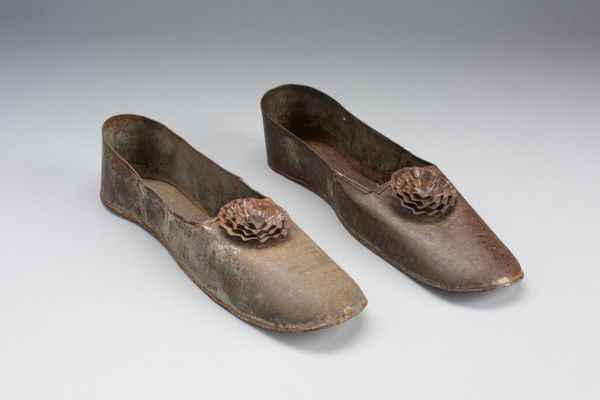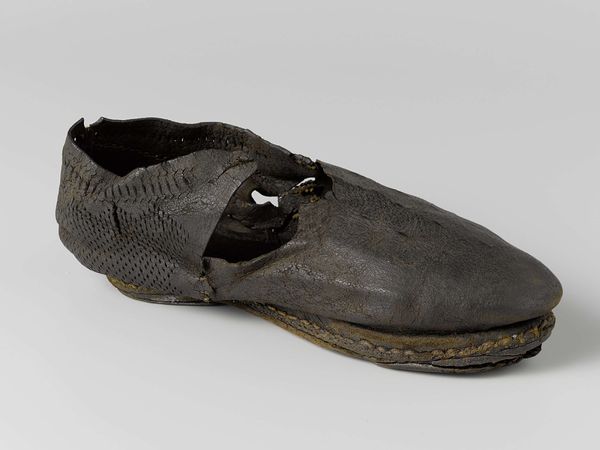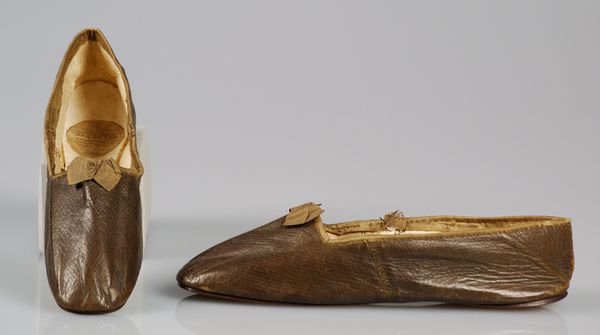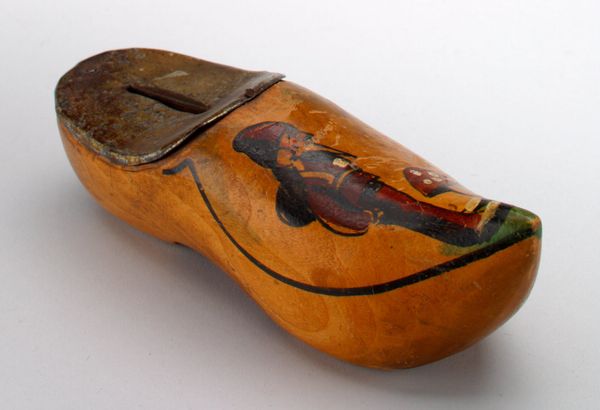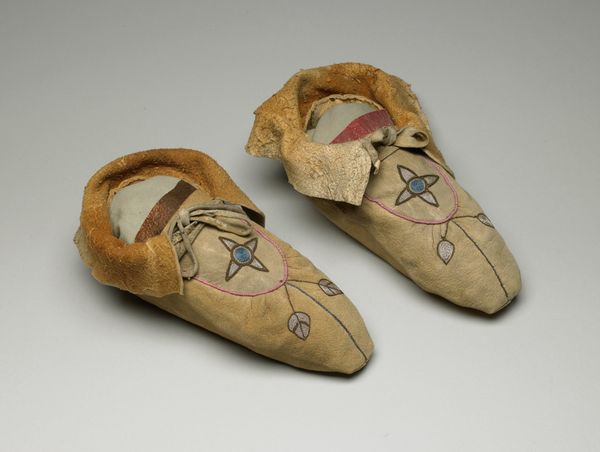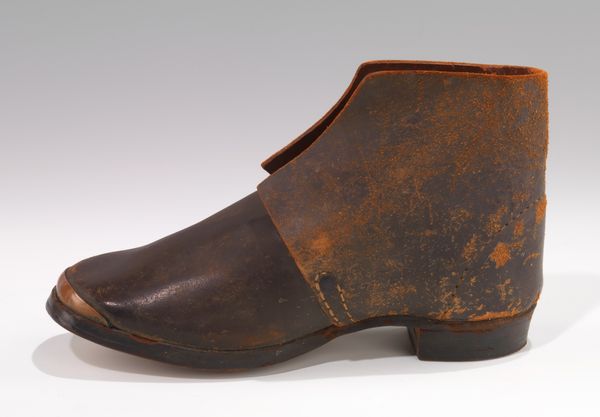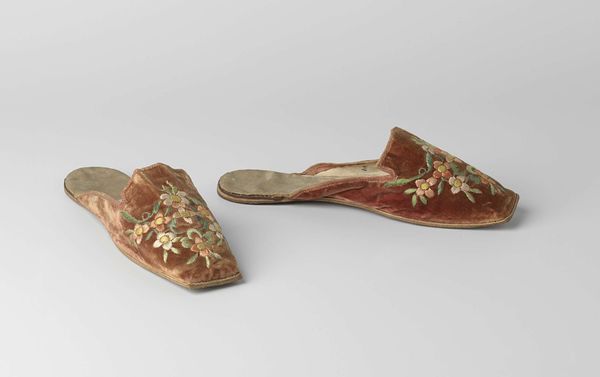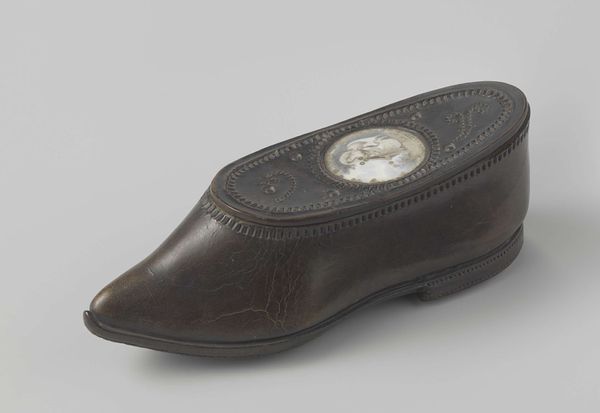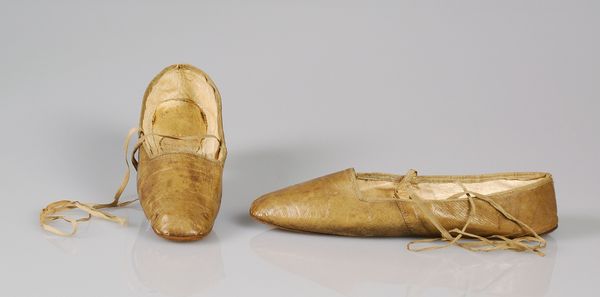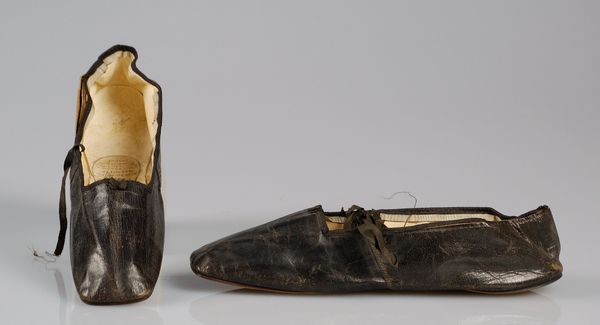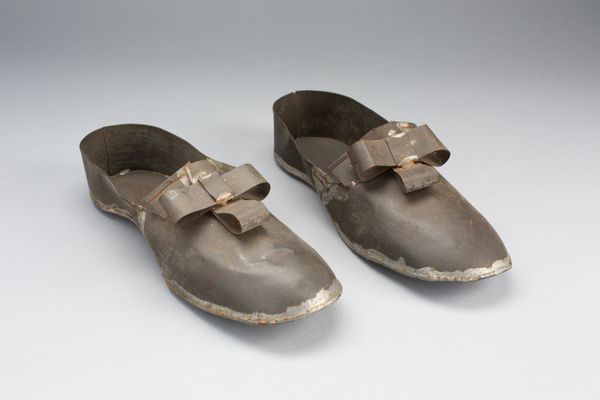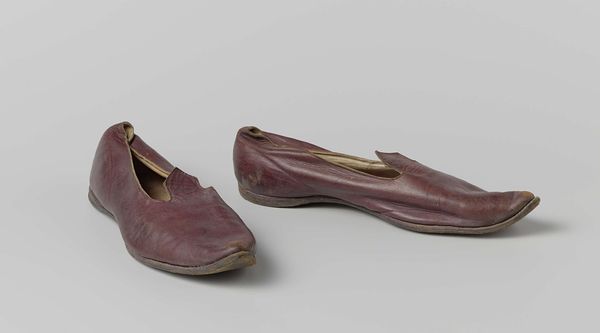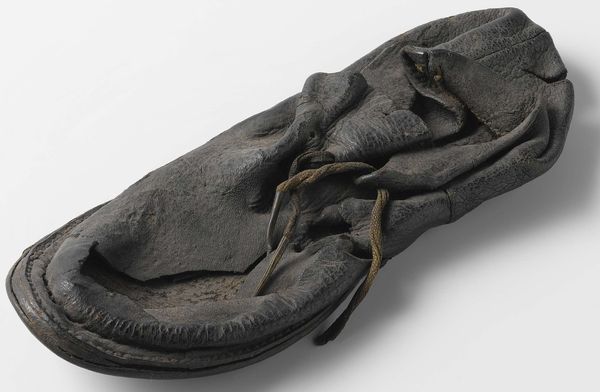![Pair of Wooden Shoes (Sabots) [right] by Paul Gauguin](/_next/image?url=https%3A%2F%2Fd2w8kbdekdi1gv.cloudfront.net%2FeyJidWNrZXQiOiAiYXJ0ZXJhLWltYWdlcy1idWNrZXQiLCAia2V5IjogImFydHdvcmtzLzJkNTQ2YTdhLThkOGItNDA5NS1hMzBmLTRiYzg4OWQyN2Q1Ny8yZDU0NmE3YS04ZDhiLTQwOTUtYTMwZi00YmM4ODlkMjdkNTdfZnVsbC5qcGciLCAiZWRpdHMiOiB7InJlc2l6ZSI6IHsid2lkdGgiOiAxOTIwLCAiaGVpZ2h0IjogMTkyMCwgImZpdCI6ICJpbnNpZGUifX19&w=3840&q=75)
sculpture, wood
#
impressionism
#
folk-art
#
sculpture
#
wood
#
decorative-art
Dimensions: overall: 12.8 x 32.7 x 11.2 cm (5 1/16 x 12 7/8 x 4 7/16 in.)
Copyright: National Gallery of Art: CC0 1.0
Paul Gauguin made this pair of wooden shoes, or sabots, out of wood, though the exact date they were made is unknown. These aren't just shoes; they're artifacts that carry the weight of cultural and artistic context. Gauguin, a Post-Impressionist, often sought inspiration outside the established art circles of Paris. He was interested in the lives of the peasantry, and although he didn't romanticize them, he did want to portray them accurately. This pair of sabots reflects a connection to the land and the working class. Shoes like these were everyday wear for rural workers in France. But here, the addition of carving transforms the mundane into art, challenging our assumptions about what is worthy of artistic representation. To truly understand this piece, you'd need to delve into the social history of 19th-century France, examining the roles of class, labor, and the artist's own biography. This investigation helps to appreciate the role of the historian in revealing these layers of meaning.
Comments
No comments
Be the first to comment and join the conversation on the ultimate creative platform.
